
MULTIMEDIA SYSTEMS
Scope & Guideline
Navigating the Future of Media Technology
Introduction
Aims and Scopes
- Image Processing and Analysis:
The journal covers advancements in image processing techniques, including denoising, enhancement, segmentation, and compression. Research in this area often employs deep learning and traditional algorithms to improve image quality and utility. - Computer Vision and Object Recognition:
A significant focus is on algorithms and systems for object detection, recognition, and tracking in images and videos. This includes the development of models for various applications, such as medical imaging, autonomous vehicles, and security. - Multimedia Communication and Streaming:
Research on efficient multimedia data transmission and streaming protocols is highlighted, addressing challenges related to quality of service, bandwidth optimization, and real-time processing. - Machine Learning and AI Applications:
The integration of machine learning techniques, particularly deep learning, in multimedia applications is a core theme. This includes the use of AI for content analysis, feature extraction, and enhancing user interactions with multimedia content. - Cross-Modal and Multimodal Interfaces:
The journal also explores interfaces that integrate multiple forms of media, such as text, audio, and visual data, focusing on improving user experience and engagement through innovative designs. - Security and Privacy in Multimedia Systems:
Research addressing security concerns such as watermarking, steganography, and privacy-preserving techniques in multimedia content is also a significant area of interest.
Trending and Emerging
- Deep Learning for Image and Video Analysis:
The application of deep learning techniques for tasks such as image classification, object detection, and video analysis is increasingly prominent, with many recent papers focusing on novel architectures and training methodologies. - Real-time Processing and Edge Computing:
Research exploring real-time multimedia processing, particularly at the edge, is on the rise. This reflects a growing need for low-latency applications in areas such as autonomous vehicles and mobile devices. - Health and Medical Applications of Multimedia Systems:
There is a notable increase in studies applying multimedia systems to healthcare, focusing on medical imaging, diagnostics, and patient monitoring, driven by the ongoing demand for telemedicine solutions. - Cross-Modal Learning and Integration:
Emerging work emphasizes cross-modal learning techniques that integrate multiple data types (e.g., text, audio, and images) to enhance understanding and interaction, reflecting the trend towards more holistic approaches in multimedia systems. - Security and Privacy Enhancements:
As concerns about data privacy and security grow, there is a rising focus on developing robust methods for securing multimedia content, including advanced watermarking and encryption techniques.
Declining or Waning
- Traditional Multimedia Retrieval Techniques:
There has been a noticeable decrease in papers focused on conventional multimedia retrieval methods, such as basic keyword-based search and older database management techniques, as researchers shift towards more advanced machine learning and AI-driven approaches. - Basic Image Processing Techniques:
The focus on fundamental image processing methods, like histogram equalization and basic filtering, appears to be declining as the field increasingly emphasizes deep learning-based methodologies for more complex image analysis. - Standard Video Compression Algorithms:
Research on traditional video compression techniques, such as H.264 and MPEG-2, is becoming less prevalent as newer standards and machine learning-based compression methods gain traction. - Manual Feature Engineering in Machine Learning:
There is a diminishing interest in manual feature extraction techniques as automated methods, particularly those driven by deep learning, become more popular and effective in multimedia applications.
Similar Journals
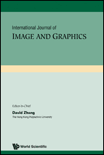
International Journal of Image and Graphics
Exploring the Intersection of Art and TechnologyInternational Journal of Image and Graphics, published by World Scientific Publishing Co. Pte Ltd, serves as an essential platform for scholars and practitioners in the realms of Computer Graphics, Computer-Aided Design, and Computer Vision and Pattern Recognition. Established in 2001 and based in Singapore, this journal has become increasingly influential, with a reputation reflected in its Q3 and Q4 rankings across key categories in Scopus, highlighting its growing impact in the academic community. Open access options remain limited; however, the journal's commitment to disseminating high-quality research allows for a rich exchange of ideas among professionals and students alike. As the 2023 metrics indicate, contributions to the journal not only enhance individual academic portfolios but also promote advancements in image processing, fostering innovation and growth within the discipline until at least 2024. It is thus a vital resource for anyone looking to deepen their knowledge and understanding of contemporary trends and technologies in image processing and related fields.
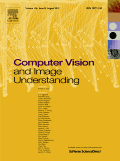
COMPUTER VISION AND IMAGE UNDERSTANDING
Pioneering Insights in Pattern RecognitionCOMPUTER VISION AND IMAGE UNDERSTANDING is a leading academic journal published by Academic Press Inc, Elsevier Science, dedicated to the advancement of the fields of computer vision, image understanding, and pattern recognition. Since its inception in 1993, this esteemed publication has garnered a reputation for excellence, achieving a remarkable Q1 ranking in the categories of Computer Vision and Pattern Recognition, Signal Processing, and Software as of 2023. With its robust impact factor and high visibility in the scientific community—ranking #22 out of 106 in Computer Vision and Pattern Recognition and #27 out of 131 in Signal Processing—this journal serves as a vital resource for researchers, professionals, and students looking to explore and contribute to state-of-the-art developments. Although it does not operate under an Open Access model, its rigorous peer-reviewed content ensures quality and relevance in a rapidly evolving technological landscape. The journal’s commitment to fostering innovation makes it an essential tool for anyone engaged in the study and application of computer vision technologies.
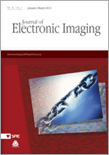
JOURNAL OF ELECTRONIC IMAGING
Illuminating the Path of Research in Atomic and Molecular Imaging.JOURNAL OF ELECTRONIC IMAGING, published by SPIE - Society of Photo-Optical Instrumentation Engineers, stands at the intersection of cutting-edge research in various fields including Atomic and Molecular Physics, Optics, and Computer Science Applications. With an ISSN of 1017-9909 and an E-ISSN of 1560-229X, this esteemed journal has been a significant contributor to the scientific community since its inception in 1993, continuing its mission to provide a platform for innovative research through 2024. Operating from its headquarters in Bellingham, WA, United States, the journal is currently categorized in the third quartile for major domains such as Electrical and Electronic Engineering, indicating a robust engagement with contemporary topics and advancements. Although it is not an Open Access journal, it remains accessible to a wide audience of researchers, professionals, and students through institutional subscriptions. With its impactful contributions and a comprehensive view of electronic imaging, this journal not only serves as a vital resource but also drives discussions that shape the future of this rapidly evolving field.
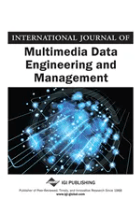
International Journal of Multimedia Data Engineering & Management
Innovating Approaches to Data Management ExcellenceInternational Journal of Multimedia Data Engineering & Management, published by IGI Global, is a pivotal platform for the dissemination of knowledge in the fields of multimedia data engineering, information management, and technology-driven methodologies. With a keen emphasis on exploring innovative approaches to data management, this journal engages researchers, professionals, and students interested in the rapidly evolving digital landscape. Although currently not designated as Open Access, the journal is accessible through institutional subscriptions, fostering rigorous academic dialogue and collaboration. The ISSN for this esteemed publication is 1947-8534 (E-ISSN: 1947-8542), ensuring its global reach and recognition within the scholarly community. By bridging theoretical perspectives with practical applications, the International Journal of Multimedia Data Engineering & Management supports ongoing advancements and drives impactful research in multimedia technologies.
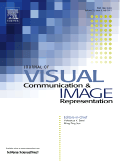
JOURNAL OF VISUAL COMMUNICATION AND IMAGE REPRESENTATION
Empowering Visual Storytelling in a Digital AgeJOURNAL OF VISUAL COMMUNICATION AND IMAGE REPRESENTATION, published by Academic Press Inc Elsevier Science, is an influential platform dedicated to the realms of visual communication, media technology, and advanced image representation. With a strong focus on interdisciplinary approaches, this journal aims to foster the exchange of innovative ideas among researchers and professionals in the fields of computer vision, image processing, and signal processing. Recognized for its significance, it boasts an impressive impact factor within its category quartiles; notably, it ranks Q2 in Computer Vision and Pattern Recognition and Electrical and Electronic Engineering, while achieving Q1 in Media Technology. Based in the United States, the journal not only provides valuable insights into the latest developments from 1990 to 2024 but also encourages cutting-edge research that enhances multimedia systems and user interactions. As a vital resource for students, researchers, and industry professionals alike, the journal ensures a robust understanding of visual information processing, critical for navigating today's digital landscape.
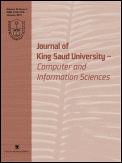
Journal of King Saud University-Computer and Information Sciences
Transforming Insights into Impactful SolutionsJournal of King Saud University-Computer and Information Sciences, published by ELSEVIER, is a prestigious open-access journal focusing on the rapidly evolving fields of computer science and information technology. Since its inception in 1996, this journal has provided a platform for high-quality research and innovative ideas, promoting the dissemination of knowledge to a global audience. With a remarkable impact factor and ranked Q1 in the Computer Science (miscellaneous) category as of 2023, it stands among the top 11% of journals in its field, reflecting its commitment to excellence and relevance. The journal proudly carries the ISSN 1319-1578 and E-ISSN 2213-1248, and it is based in Saudi Arabia while being part of a global academic network. With a Scopus rank of #26 out of 232 in general computer science, the Journal of King Saud University-Computer and Information Sciences is an essential resource for researchers, professionals, and students seeking to stay at the forefront of technological advancement. As it continues to thrive through 2024, it invites contributions that will shape the future of computing and information sciences.

IEEE Open Journal of the Computer Society
Fostering Collaboration in a Digital EraIEEE Open Journal of the Computer Society is an esteemed open-access journal dedicated to advancing the field of computer science. Published by IEEE-INST ELECTRICAL ELECTRONICS ENGINEERS INC since 2020, this journal promotes innovative research and scholarly communication in a rapidly evolving technological landscape. With a notable Q1 ranking in the Computer Science (miscellaneous) category and a high Scopus percentile of 92, it serves as a premier platform for disseminating cutting-edge findings and interdisciplinary studies. The journal is committed to facilitating unrestricted access to valuable insights, fostering collaboration among researchers, professionals, and students alike. As it continues to publish impactful articles through 2024 and beyond, the IEEE Open Journal of the Computer Society remains a vital resource for anyone interested in the latest trends and developments in computer science.
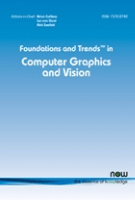
Foundations and Trends in Computer Graphics and Vision
Driving Excellence in Computer Graphics and VisionFoundations and Trends in Computer Graphics and Vision, published by NOW PUBLISHERS INC, is a premier journal dedicated to advancing the fields of computer graphics and vision. With an impressive impact factor and ranked Q1 in the Computer Vision and Pattern Recognition category, this journal has established itself as a vital resource for cutting-edge research and trends. Spanning from 2005 to 2024, it covers a wide array of topics within its scope, featuring comprehensive reviews and insights that are essential for professionals, researchers, and students alike. The journal’s high Scopus rank, placing it in the top 4 of 106 in its discipline, underscores its relevance and authority in the field. While currently not offering open access, the importance of its curated content makes it a valuable addition to any academic library and a must-read for those looking to stay at the forefront of computer graphics and vision advancements.

Signal Image and Video Processing
Empowering Engineers with Cutting-edge InsightsSignal Image and Video Processing, published by Springer London Ltd, is a cutting-edge academic journal dedicated to the fields of electrical and electronic engineering and signal processing. With an ISSN of 1863-1703 and an E-ISSN of 1863-1711, this journal plays a pivotal role in disseminating innovative research findings from 2007 to 2024, boasting a commendable Q2 ranking in its respective categories. Located in the United Kingdom, the journal attracts a diverse readership of researchers, professionals, and students eager to explore advancements in signal processing technologies and their applications in imaging and video analysis. Although it does not offer open access, its rigorous peer-review process ensures the publication of high-quality, impactful research, evident by its respectable rankings within Scopus in both electrical engineering and computer science domains. The journal serves as vital resource for those aiming to stay at the forefront of technological developments and research in image and video processing.

Image Processing On Line
Empowering collaboration in the realm of signal and software processing.Image Processing On Line (ISSN: 2105-1232, E-ISSN: 2105-1232) is a pioneering open-access journal published by IMAGE PROCESSING ONLINE-IPOL since 2011, dedicated to advancing the field of image processing through the dissemination of high-quality research and innovative methodologies. Based in France, the journal serves as a platform for researchers, professionals, and students to share insights and breakthroughs in the rapidly evolving domains of Signal Processing and Software. With its current ranking as Q4 in both categories according to the 2023 category quartiles, and a Scopus ranking highlighting its significance within the computer science field, the journal is focused on nurturing contributions that push the boundaries of image processing techniques. Accessible to a global audience, Image Processing On Line is crucial for those engaged in both theoretical explorations and practical applications, ensuring a collaborative repository of knowledge that fosters innovation and development in this vital area of technology.